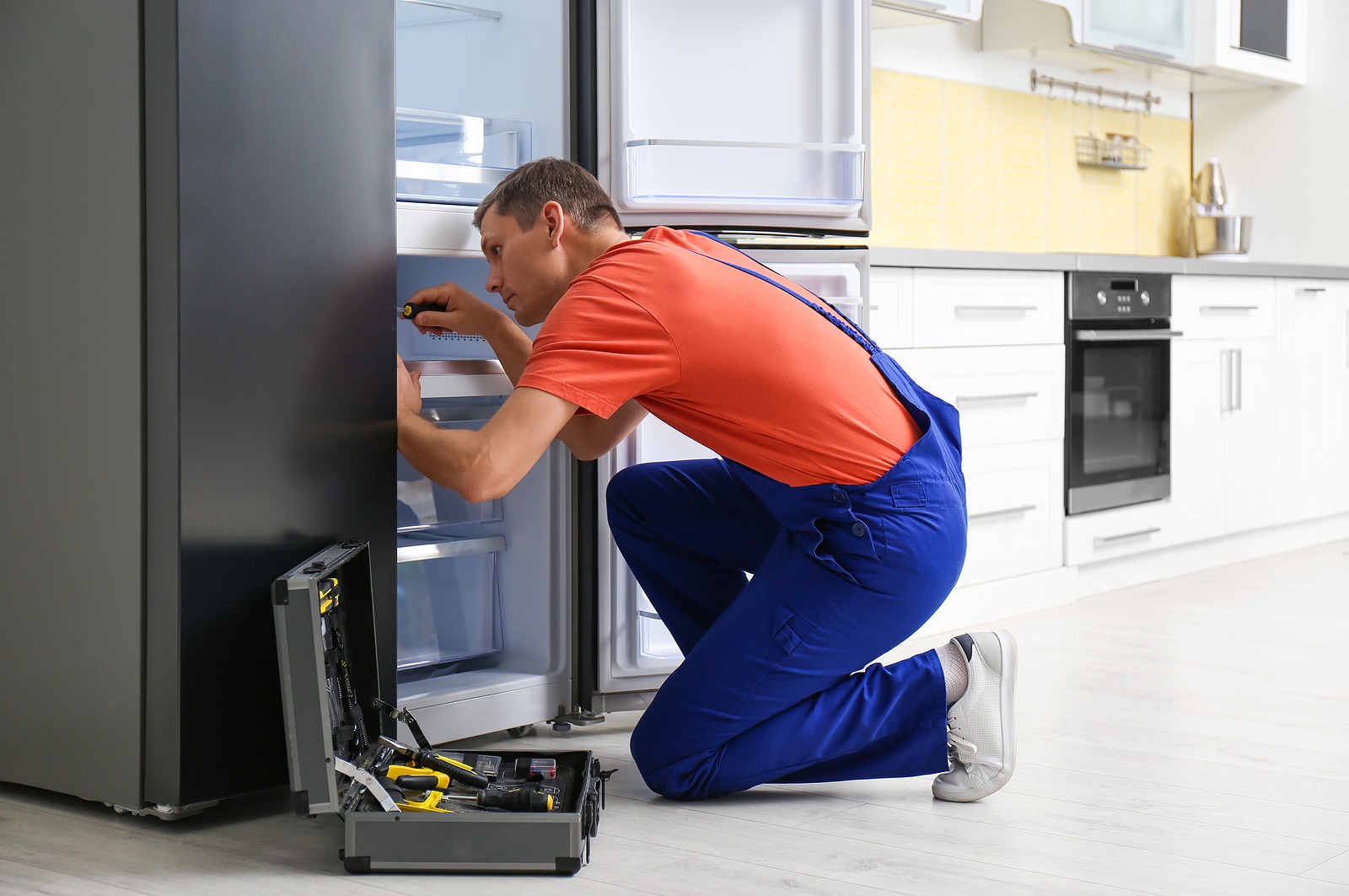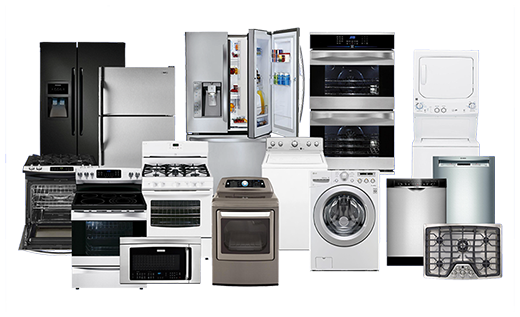Kenmore Dryer Not Heating? – Kenmore Dryer Repair Oro Valley Dependable Refrigeration & Appliance Repair Service
Kenmore Dryer Not Heating? – Kenmore Dryer Repair Oro Valley Dependable Refrigeration & Appliance Repair Service
Blog Article
The Ultimate Overview to Recognizing Device Fixing at Home
When your fridge stops cooling or your oven rejects to warmth, it can feel frustrating. Recognizing appliance repair work at home can save you money and time. You'll discover to recognize signs and symptoms, use necessary tools, and adhere to a methodical troubleshooting procedure. However before you start, there are crucial safety and security preventative measures you need to consider. What are the most usual troubles, and how can you repair them? Let's explore the basics.
Usual Device Issues and Their Signs
When your home appliances start acting up, it's vital to recognize the signs at an early stage. Neglecting them can result in larger problems and costly repairs. For example, if your refrigerator isn't cooling correctly, you might see warm spots or condensation forming. This can suggest a falling short compressor or an obstructed vent.Your dishwasher might show problems via dirty dishes or unusual sounds during cycles. If you hear grinding or clanking, it's time to investigate.A washing maker that will not rotate or drain can leave you with soaked washing, suggesting a clogged drain or a malfunctioning pump.Lastly, if your oven's temperature level seems off or it takes permanently to preheat, you could be taking care of a faulty thermostat. By staying sharp to these symptoms, you can resolve concerns before they rise into significant repair work.
Important Devices for Home Appliance Repair Work
When you're taking on device fixings in the house, having the right devices is necessary. Standard hand devices like screwdrivers and pliers will help you disassemble and fix various appliances, while electric testing devices ensure you're working securely with circuitry. Allow's discuss what you need to begin on your fixing journey.
Fundamental Hand Tools
Having the right devices is necessary for efficient device repair work in the house. Begin with a reputable screwdriver set, consisting of both flathead and Phillips types, as screws prevail in home appliance setting up. Pliers are likewise important; they aid with gripping, twisting, and cutting wires or tiny elements. A set of needle-nose pliers can get to limited areas easily. You'll require a good flexible wrench for tightening up or loosening nuts and screws. An utility blade is useful for reducing through product packaging or insulation. Don't forget a durable workbench or surface to securely arrange your tools and parts. With these fundamental hand devices, you'll be well-prepared to tackle most device fixings that come your means.
Electrical Testing Instruments
Alongside standard hand tools, electrical screening devices play an important role in device repair work. These devices help you diagnose electric problems and assurance devices function securely. A multimeter is essential; it determines voltage, existing, and resistance, allowing you to identify issues promptly. A non-contact voltage tester is an additional essential, letting you identify online cords without making direct contact, improving your security. Clamp meters are terrific for measuring existing flow in wires without separating them, conserving you time and initiative. Additionally, circuit testers can promptly check if outlets are functioning correctly. By utilizing these devices, you'll streamline your troubleshooting process and improve your repair work abilities, making appliance maintenance a lot easier.
Step-by-Step Overview to Diagnosing Home Appliance Issues
When your home appliance breaks down, it can be aggravating, yet identifying the concern does not need to be overwhelming. You'll learn to identify typical issues and use reliable troubleshooting strategies. Let's walk with the steps to get your home appliance back in functioning order.
Common Device Troubles

Repairing Methods Clarified

Fixing Major Kitchen Area Devices: A Closer Look
Have you ever questioned exactly how to tackle usual problems with your kitchen devices? Repairing major kitchen home appliances like refrigerators, stoves, and dish washers can be easier than you think. Start by determining the problem-- whether it's a fridge not cooling or a stove that won't heat up. Frequently, a basic reset or checking the power resource can fix the issue.For fridges, tidy the condenser coils and examine the door seals. If your stove's not home heating, examine the heating aspect and thermostat. Dish washers may just require a tidy filter or a reset to obtain them back in activity. Constantly unplug the device prior to diving into repair services to ensure your safety.Don' t neglect to speak with the individual handbook for details troubleshooting ideas connected to your version. With a little persistence and the right devices, you can confidently deal with appliance fixings and conserve cash while doing so!

Repairing Laundry Appliances: Tips and Techniques
When your washing home appliances begin breaking down, it can feel overwhelming, yet troubleshooting them doesn't have to be a trouble. Begin by examining the power supply. Verify the device is plugged in and the outlet is functioning. Next off, evaluate the door or lid button; a faulty button can stop the machine from operating.For washing machines, if it's not rotating, look for unbalanced lots. Rearranging the garments might resolve the problem. If your clothes dryer isn't heating, tidy the lint filter and check the vent for blockages.Listen for unusual sounds; they can suggest an issue. If your device is leaking, examine the pipes for fractures or loose links. File any type of error codes displayed on digital displays, as they can direct you in recognizing the problem. Get in touch with the user manual for specific fixing suggestions connected to your version.
Security Precautions to Take Throughout Repair works
Before you begin any device repair work, it's necessary to prioritize security to avoid accidents or injuries. Unplug the appliance or turn off the circuit breaker to guarantee no power reaches it while you work. Usage protected tools to reduce the risk of electric shock. Put on safety and security goggles and gloves to shield on your own from sharp edges or debris (Dependable Refrigeration & Appliance Repair Service Washing Machine Repair).Make specific your work area is tidy and well-lit, so you can see what you're doing. Keep youngsters and family pets far from the area to stay clear of distractions and possible hazards. If you're dealing with gas home appliances, be additional cautious; check for leakages before proceeding.Take your time, and don't rush with repair work. If you feel unpredictable concerning any step, it's better to stop briefly and research study than to think. Adhering to these safety measures will help develop a more secure environment for your do it yourself appliance repair work task
When to Call a Professional for Help
How do you recognize if it's time to call in a specialist for home appliance repairs? If you have actually attempted fundamental troubleshooting without success, it's a clear indication. If your home appliance still won't start or shows unusual sounds after resetting it, do not hesitate to seek specialist help.When you observe leakages, smoke, or melting scents, prioritize safety and call a pro right away. These problems can lead to more considerable damages or present risks to your home.Also, if your appliance is under warranty, getting in touch with a professional is often the most effective path. They can ensure that repairs will not void your service warranty, saving you money in the lengthy run.Finally, if you're unsure or unpleasant with intricate repair services, it's a good idea to leave it to the professionals. Keep in mind, taking on challenging issues without the appropriate experience can result in costly blunders. Count on a professional when in doubt!
Regularly Asked Questions
Exactly How Can I Protect Against Device Troubles in the Future?
To stop home appliance troubles in the future, you should carry out routine upkeep, look for damage, clean filters, and avoid overloading. Staying aggressive will certainly help extend their life-span and maintain them running smoothly.
What Are the Most Usual DIY Device Fixing Mistakes?
You might neglect safety precautions, avoid fixing steps, or make use of wrong devices when trying DIY device fixings. Rushing the process or disregarding supplier standards can lead to more considerable concerns and costly blunders. Remain individual and educated!
Just how Do I Know if a Component Demands Substitute?
You can inform if a component needs replacement by looking for uncommon sounds, leakages, or irregular efficiency. If the home appliance has a hard time to operate properly or shows noticeable damage, it's likely time for a replacement.
Can I Make Use Of Generic Components for Appliance Fixes?
Yes, you can use generic parts for device repairs, yet ascertain they're compatible - Fixes washers and dryers Oro valley Dependable Appliance Repair. Generic components might conserve you cash, but they might influence performance or long life, so consider your choices thoroughly prior to making a decision
What Guarantees Cover Device Services?
The majority of appliance warranties cover repair services for making problems, however they frequently omit damage from misuse. Check your warranty terms very carefully, as some could need using licensed technicians and initial parts for protection to continue to be valid.
Report this page